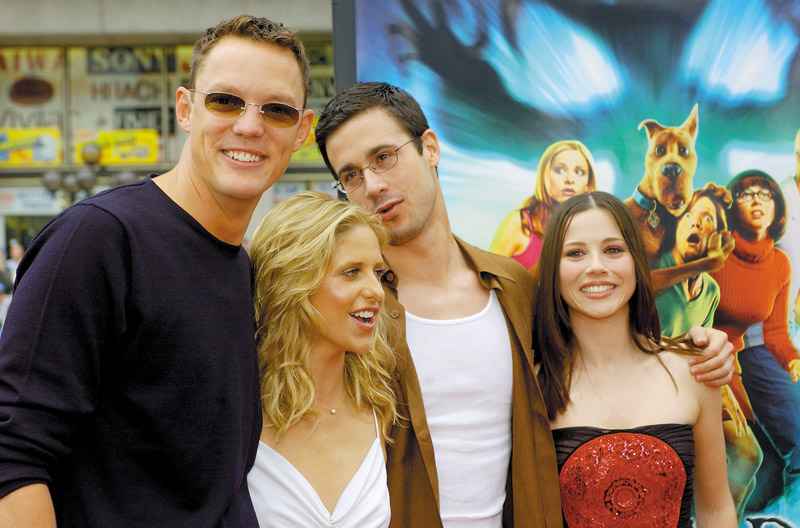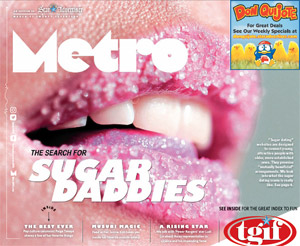Jinkies

The cast of 2002’s ‘Scooby-Doo’ (from left) Matthew Lillard, Sarah Michelle Gellar, Freddie Prinze Jr. and Linda Cardellini AP PHOTO
Even as a little kid, I never did like Velma Dinkley much.
Let me backtrack a little. During long summer vacations spent with my grandparents in Hilo, I had a lot of time to watch TV — namely, the old ’70s episodes of Scooby-Doo, Where Are You! and The New Scooby-Doo Movies.
(The latter is quite interesting in retrospect — campy hour-long episodes featuring celebrity guest stars as luminous as Sonny and Cher, or the Harlem Globetrotters, or Batman and Robin, solving mysteries with Scooby and the gang. It would be absolutely unheard of today to try something like that.)
Anyway, I liked Scooby the best, obviously, because he was a dog, and all children are partial to dogs (it’s a fact). My favorite male character was Shaggy because, well, Scooby liked Shaggy best, and so did I.
My favorite female character was Daphne, mostly because I didn’t like Velma.
Velma was ugly in her bulky orange sweater, thick glasses and unflattering bob. She would nag people. She was smart, sure, but she wasn’t fun.
I sometimes wished she and Fred — let’s be real, nobody likes Fred, either — would go somewhere else, to leave Shaggy and Daphne to solve mysteries with Scooby.
(Funnily, the show did do just that — in 1983. The result was not very good.)
I used to play-act out episodes in my spare time, as children do. I had a set of figurines that came with a haunted train. I reconfigured every story so that Daphne could save the day, assisted by Shaggy and Scooby. Velma and Fred usually ended up getting kidnapped and run over by that train (don’t worry, they didn’t die).
You could interpret that as some early feminist revisions on Daphne’s role as resident damsel in distress. But you could also see it as me shying away from what Velma really represented: me.
Daphne doesn’t have to be smart to be a valued member of the team. She simply has to exist. She doesn’t have Fred’s leadership or Velma’s brains or Shaggy’s comic relief. Daphne is the pretty one.
And even as an 8-year-old, I knew I wasn’t that. I was never going to be that. I was always destined to be a Velma — smart, maybe, but undesirable. When Fred tells the gang to split up, he always picks Daphne to accompany him. Sometimes he’ll take Daphne and Velma, but he’ll almost never go with Velma alone. Villains never kidnap Velma.
Intentional or not, the message was clear: What you can do is less important than what you look like. And these rules don’t apply to men; otherwise Fred would have usurped Shaggy in popularity long ago. (The only character less popular than Fred is Scrappy-Doo.)
So I resented Velma, that harbinger of my future, and focused my affections on Daphne.
Looking back now, though, as Scooby-Doo has reinvented the show with a million more incarnations (the current thing is post-apocalyptic monster hunter Scooby-Doo), I wish I had taken a different lesson from Velma.
I wish I could’ve seen a character that was entirely comfortable in her skin, that didn’t need validation from anyone else to fuel her self-worth. Velma wore what was comfortable. Velma didn’t care whom she got paired up with because solving the mystery was more important. Velma knew her value. I wish I had known mine so easily.
PTAKEYA@MIDWEEK.COM
TWITTER: @LORDMAYOCLOUD

